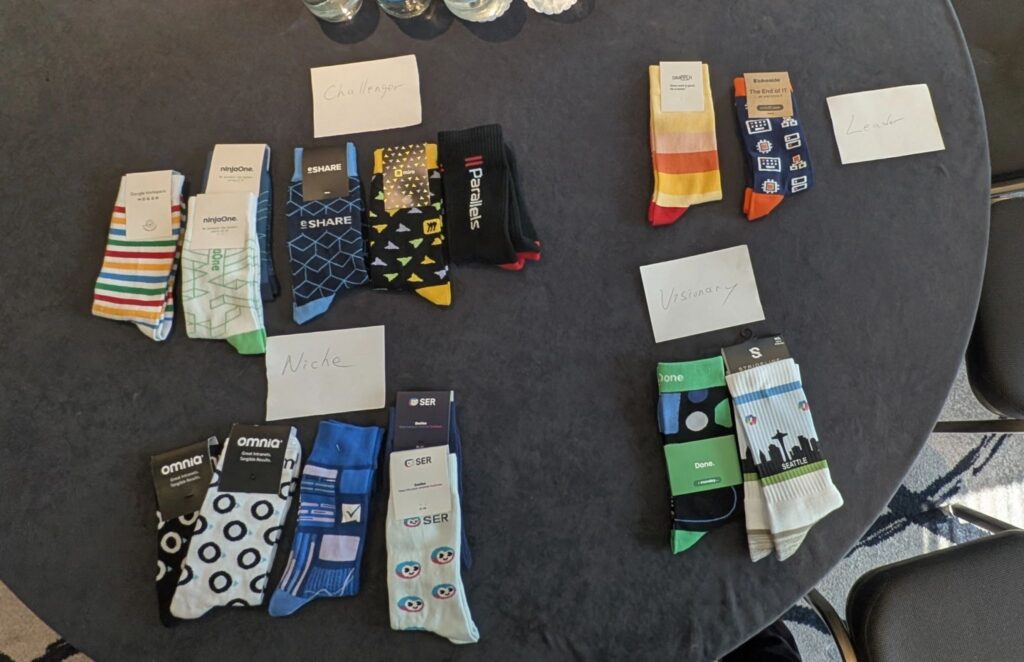
Lakeside’s latest research-backed guide explores digital employee experience leadership and what it means for organizations
Keeping today’s complex and often dispersed workforces productive requires a lot more from IT than just fixing hardware and software issues whenever support tickets come rolling in. Real business success also depends on organizations’ ability to constantly adapt and grow to meet the evolving technology needs of employees — whether they work from home, the office, or anywhere in between.
It’s no surprise then that digital employee experience (DEX), the quality of employees’ interactions with workplace technology, has become an essential part of IT strategy in recent years and will likely stay that way. In its August 2022 Market Guide for DEX Tools, Gartner predicts 50% of IT organizations will have some kind of DEX strategy in place by 2025.
“Demand is rising for objective measurement and continuous improvement of DEX as its influence on the overall employee experience increases. This burgeoning influence is driven by the shift to hybrid work, continued digital workplace investment, financial pressures related to inflation, accelerated software release cadence and unprecedented talent conditions (collectively known as the “Great Resignation”).”
Gartner Market Guide for Digital Employee Experience Tools, August 2022
Authored by analysts Dan Wilson, Tom Cipolla, Tori Paulman, Autumn Stanish, Stuart Downes
Most organizations, however, still struggle to find that perfect balance between technology, digital experiences, and productivity.
In Lakeside Software’s Digital Workplace Productivity Report 2022, we delved into global survey results gathered from a total of 600 respondents — including executives, IT leaders, and employees — on the state of workplace technology and its effect on business productivity. Findings show that employees on average perform at only 60% of their total potential productivity given their current digital tools and infrastructure, and also lose nearly an hour of productive work time (54 minutes) each week to tech disruptions and downtime.
The report also highlighted a persisting perception gap between employees and leadership on the state of digital experience. Only 20% of executives see the need for major improvement in DEX while 52% of employees believe DEX should be a top priority for management.
But how can organizations objectively and accurately gauge their progress toward better digital employee experience? What steps need to be taken to improve digital experiences? And what’s at stake for businesses that ignore DEX?
In The Digital Experience Guide: Seven Qualities of DEX Leadership, Lakeside delves back into its research to define DEX leadership, where organizations fall on the DEX maturity curve, the business outcomes of improving DEX, and what it takes to bring DEX to the next level.
Here’s a quick overview of our all-new, research-based guide.
What Is DEX Maturity?
Every DEX-focused organization is at a different point in its journey. While some enterprises are just starting to collect device and end-user data, others might already be fully adapting IT operations and infrastructure to optimize digital experiences.
Based on IT staff responses to 2022 global survey questions, Lakeside has identified three main DEX maturity stages — beginner, intermediate, and leader.
While most organizations are on their way toward becoming DEX leaders, however, only a small portion have actually made the grade. More than half (58%) of organizations are in the “intermediate” category while only 20% are considered leaders and 22% are just getting started.
E-BOOK
The Digital Experience Guide
7 Qualities of Digital Employee Experience Leadership
7 Qualities of DEX Leadership
To become DEX leaders, organizations must make strategic IT transformations prioritizing end users and their interactions with workplace technology. As a result, an enterprise that leads in digital employee experience possesses several key qualities:
- Proactive remediation
- Integration across IT functions
- Complete IT visibility
- Personalized IT infrastructure and support
- Self-help support options for employees
- Automation
- Predictive analysis
Lakeside’s research shows that DEX leaders have a few other commonalities, too.
Technology and financial services currently lead in DEX across all industries, likely because of their ability to adapt to recent remote/hybrid work trends and adopt new technology that improves digital experiences. Organizations that earn more than $10 billion in revenue also have the most DEX leaders (25%) and potential leaders (69% intermediate). Higher earnings might also explain why, on average, DEX leaders were able to raise their service desk budgets by 5.7% and increased their IT staff by four people from 2021 to 2022 — well above the average 3.9% budget increase and three additional staffers across organizations of all DEX maturity levels.
WEBINAR
How to Become a DEX Leader
Best Practices from DEM Experts
What DEX Leaders Gain
As DEX leaders, organizations don’t just help their employees — they improve their bottom lines, too. Delivering high-quality digital experiences allows businesses to grow and stay competitive with:
Increased employee recruitment and retention
More than half of employees say DEX is an important or very important factor when deciding whether to stay with their current employer (54%) or when considering a future employer (61%).
Greater ability to support a hybrid workforce
Sixty percent of employees say the right technology plays a large or very large role in their digital experience when working remotely.
Higher productivity
Employees estimate that their productivity could go up by more than 20% is their organizations can provide the right digital tools.
Better provisioning
Right-sizing and optimizing provisioning to match the needs of individual users results in more satisfied and highly performant users at less cost.
Reduced downtime
Employees of organizations with high DEX maturity lose only a half hour (30 minutes) of productive time per week on average compared to those employed by organizations with low levels of DEX maturity that face more than four times (128 minutes) as much productivity loss.
How Leaders Deliver Better DEX
With digital experience management solutions such as Lakeside’s Digital Experience Cloud, powered by SysTrack, organizations have the tools and data-driven insights to make vital IT changes that yield better digital employee experiences and valuable business outcomes.
But what specific changes help grow DEX maturity?
“To drive enhanced employee experience, you need to be able to prioritize and assess the impact of user issues, and if there are outages respond swiftly and effectively. Poor digital experience impacts employee productivity, which hurts the bottom line, and it affects employees’ ability to best serve their customers, which is bad for business.”
Chris Kirkpatrick
Global Portfolio Leader, Kyndryl
For the Digital Experience Guide, Lakeside consulted our experts, customers, and partners on the most critical IT transitions organizations need to make to become successful leaders:
- Reactive to proactive IT
- Siloed to integrated
- Incomplete to complete data
- One-size-fits-all to personalized IT
- IT dependent to self-reliant services
- Manual to automated
- Static to predictive analysis
Their combined perspectives surface a major theme: Greater visibility into IT environments and digital experiences not only help IT teams do more for employees — it also helps organizations achieve more.
Prepare for Your Journey Toward DEX Leadership
Explore how your organization can gain complete IT visibility, incorporate proactive and personalized IT practices, and kick off other vital transformations. Request a custom demo today.
Subscribe to the Lakeside Newsletter
Receive platform tips, release updates, news and more



